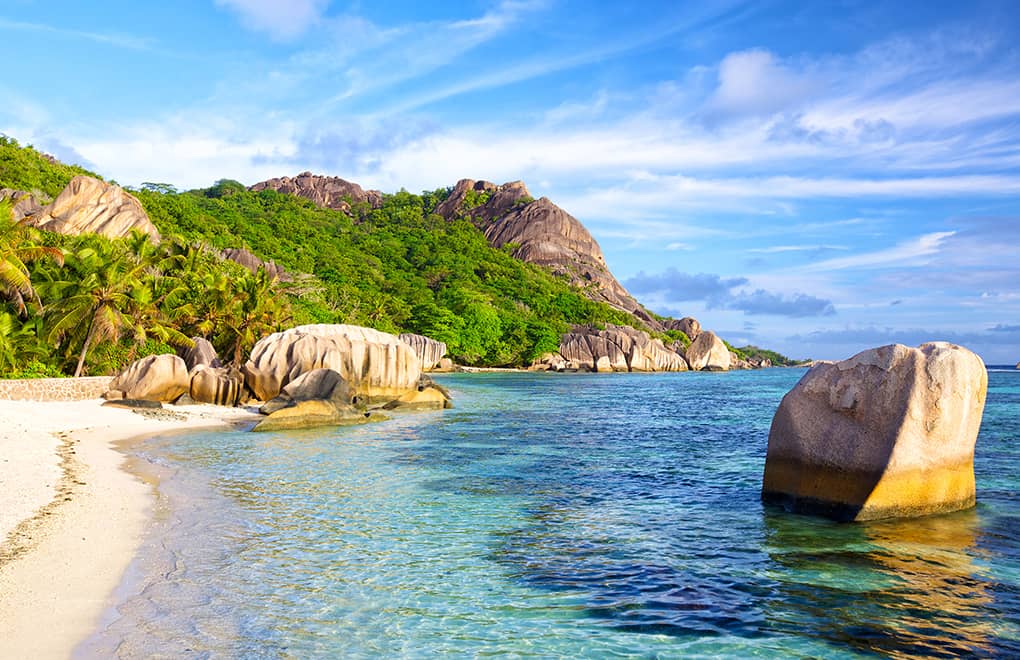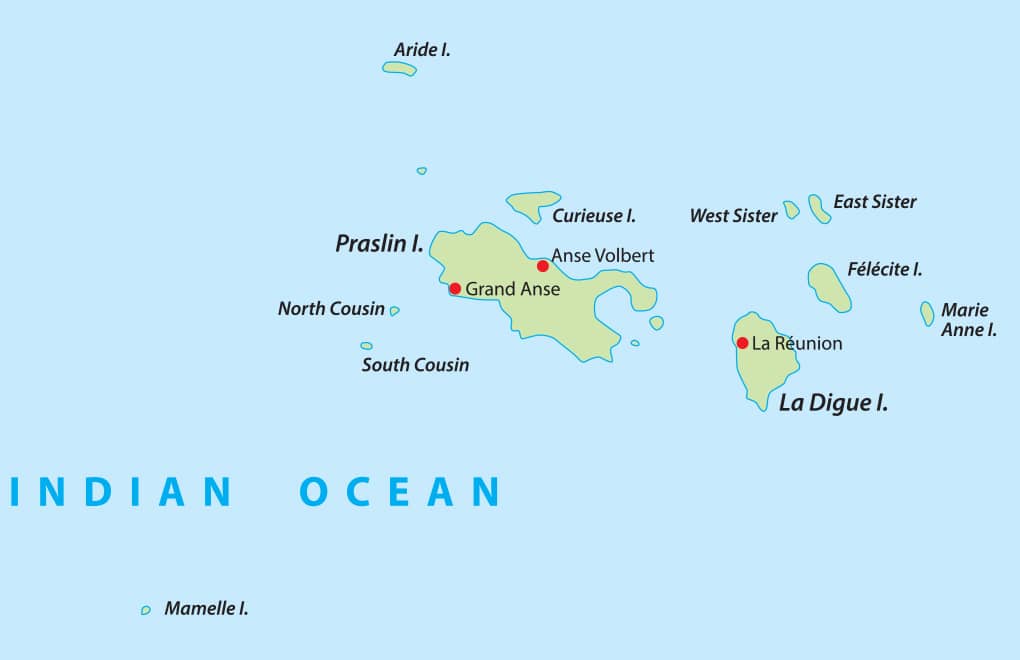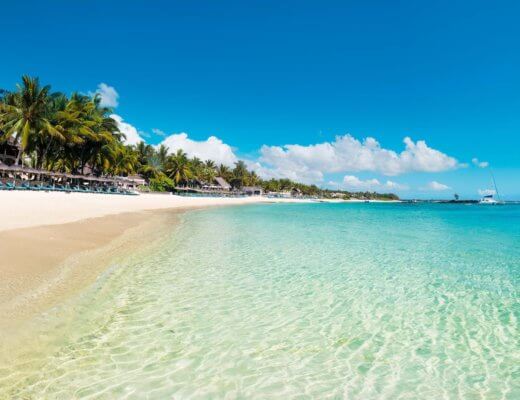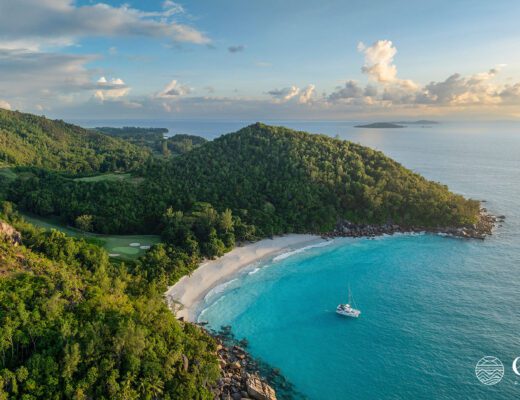The laid-back island of La Digue is the Seychelles’ 3rd largest inhabited island and it’s easily reached by boat from Praslin or Mahé. On La Digue, an almost motor-free island, nobody ever seems in a hurry. Creole houses nestle under papaya trees and fishermen dally along the road carrying sticks hung with fish.
La Digue is also famously home to Anse Source D’Argent, the world’s most photographed beach, but there’s plenty more to discover.
How to get to La Digue island
Just a 15-minute high-speed catamaran ride from Praslin or an hour from Mahé, you might consider its larger neighbours quiet and laidback until you discover the slow-pace of life on La Digue. Most transportation here is by bicycle so grab our map and hire a bike to explore this idyllic island.
What to see on La Digue’s West coast
A visit to La Digue will begin in the port of La Passe, a quiet, spread out village, friendly and welcoming. Until recently there were no cars on La Digue and even now there are very few giving La Passe a feeling of being from a bygone age.
While visiting La Passe take time to venture inland to the Veuve Reserve, the last refuge for the endangered black paradise flycatcher, known locally as veuve (French for ‘widow’).
The nearest beaches to La Passe are La Reunion and the famous Source D’argent. Stunning to visit and photograph with their white sand and granite boulders, the swimming here is limited because of their shallow waters.
Anse Source D’argent is on the land of L’Union Estate, a traditional copra mill with a majestic plantation House at its centre, now a museum. Horse riding is available to explore the beautiful Source D’argent on horseback.
A short walk from Anse Source D’argent will bring you to Anse Pierrot, just as beautiful as its famous neighbour but with fewer visitors.
What to discover on La Digue’s South coast
Renowned for their rugged, secluded beauty, the wave-swept beaches of Grande Anse and Petite Anse are well worth the slightly arduous journey to get to them, although swimming is not advised as the currents here are very strong. Neighbouring beach Anse Cocos has the same danger of currents, although a natural lagoon formed by granite boulders at its northern tip creates a safe pool for a refreshing dip.
What to do on La Digue’s East coast
The beaches along the east coast of La Digue are much more rugged and windswept than the pretty coves of the west but for many that is where their beauty lies. Although not suitable for swimming, visitors can often explore the secluded sands of Anse Banane, Anse Grosse Roche with its massive granite boulder and Anse Gaulettes without spotting another person.
Where to go for a swim on La Digue’s North coast
The north coast of La Digue provides the best swimming at Anse Severe and Anse Patates. They may not be as picturesque as the beaches on the west coast but the snorkelling here is stunning.
What to do in the interior of the La Digue island
At only 10 square kilometres, La Digue is the smallest of Seychelles’ 3 ‘large’ islands so a journey to its interior doesn’t take long and will never take you too far away from a beach. For the most breath-taking views of the island and its neighbour Praslin take the short walk to the summit of Eagle’s Nest Mountain.
Book an excursion to La Digue from Constance Lémuria before you arrive with our online concierge service.
Read more
- For more Seychelles inspiration check out our maps of Mahé and Praslin
- Take a look at our ‘at a glance’ Seychelles travel guide
- Discover the top 6 beaches in Seychelles






No Comments